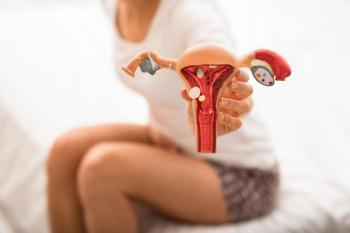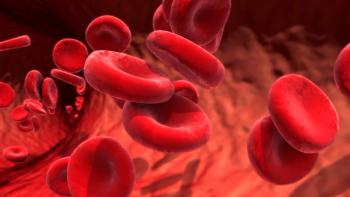
STIs during pregnancy linked to higher risk of birth complications
A new study finds that infections such as chlamydia, gonorrhea, and syphilis during pregnancy significantly increase the risk of stillbirth, preterm birth, and low birth weight.
The risks of significant birth complications such as stillbirth, preterm birth, and babies born smaller than expected are increased by the presence of sexually transmitted infection (STI) during pregnancy, according to a recent study published in The Lancet Regional Health–Western Pacific.1
The data included nearly 60,000 births between 2005 and 2020. Examples of associations discovered include a 3-fold increased risk of preterm birth from congenital syphilis, a 2-fold increased risk of stillbirth from gonorrhea, and higher odds of small for gestational age babies from chlamydia, gonorrhea, and trichomoniasis.1
“This research shows STIs during pregnancy may lead to potentially devastating outcomes,” said Jennifer Dunne, PhD, epidemiologist and statistician at Curtin University in Australia. “Current STI screenings happen early in pregnancy, but we need additional checks later in pregnancy, especially in high-risk areas.”1
Collecting STI data
Investigators conducted a retrospective population-based cohort study to evaluate the link between STIs during pregnancy and adverse pregnancy outcomes.2 Data from the Northern Territory in Australia were obtained from the Northern Territory Perinatal Data Collection.
Live and stillbirths between July 1, 2005, and December 31, 2020, were included in the analysis. Exclusion criteria included gestational age under 20 weeks or at least 45 weeks, multiple births, maternal age under 16 years or over 45 years, and birth weight under 400 g or over 6000 g.2
Indications of prenatal chlamydia, gonorrhea, trichomoniasis, and syphilis were included in the dataset. The notification date was reported as the date of diagnosis, with data linkage keys used to map these dates to prenatal periods.2
Infant STI cases were also reported. When these cases occurred without a maternal diagnosis, investigators concluded the infection was present during pregnancy.2
Pre-labor rupture of membranes, small for gestational age, preterm birth, and stillbirth were reported as primary outcomes. Categories of preterm birth included spontaneous and provider-initiated. Covariates included maternal age, smoking and alcohol consumption during pregnancy, Aboriginal ethnicity, parity, and year of delivery.2
Participant characteristics and risks
There were 59,465 births included in the final analysis, with 31% of mothers aged 30 to 34 years, 40% primiparous, 79.5% not smoking during pregnancy, and 97.5% not consuming alcohol during pregnancy. Chlamydia was reported in 2.6% of cases, gonorrhea in 1.4%, trichomoniasis in 4%, and syphilis in 0.2%.2
Small for gestational age had the greatest associations, with a relative risk (RR) of 1.86 for maternal chlamydia, 1.76 for gonorrhea, and 1.10 for trichomoniasis vs no maternal STI. An RR of 1.97 was reported for stillbirth in women with gonorrhea and 1.23 for preterm birth in those with trichomoniasis, highlighting additional associations.2
Maternal STIs were not linked to spontaneous preterm birth or premature rupture of membranes. Small cell counts caused data linking maternal syphilis with premature rupture of membranes and stillbirth to be suppressed.2
Additional risks and co-infection
RRs of 3.34 and 2.22 were reported for preterm birth and small for gestational age, respectively, for cases of congenital syphilis. However, there was no link between congenital chlamydia and small for gestational age, and all other associations were suppressed because of small cell counts.2
Only 1 association was reported for STI coinfections with adverse perinatal outcomes. This association was for small for gestational age in women co-infected with gonorrhea and trichomoniasis, with an RR of 1.81. Overall, the trial highlighted significant associations between STIs during pregnancy and adverse perinatal outcomes.2
“Many of these infections are common, preventable, and treatable; we just need to be able to catch them in time to treat them as early as possible,” said Dunne.1
References
- Research reveals STIs during pregnancy linked to adverse birth complications. Curtin University. July 21, 2025. Accessed July 28, 2025.
https://www.eurekalert.org/news-releases/1092014 - Dunne J, Tessema GA, Legge M, et al. The association between sexually transmitted infections and pregnancy outcomes in the Northern Territory, Australia: a population-based cohort study. Lancet Reg Health – West Pac. 2025;60:101610. doi:10.1016/j.lanwpc.2025.101610
Newsletter
Get the latest clinical updates, case studies, and expert commentary in obstetric and gynecologic care. Sign up now to stay informed.










